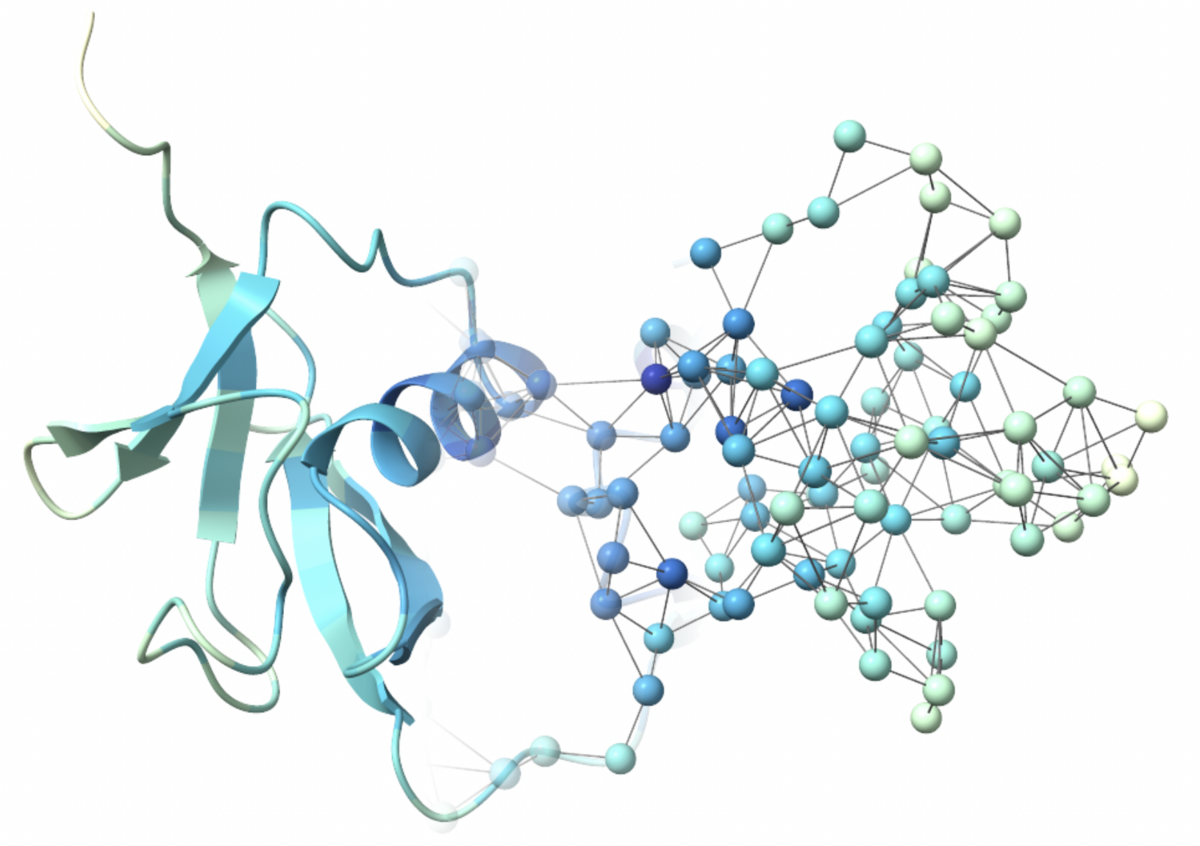Network theory for biomolecules
Describing and analysing the interaction dynamics in biomolecular systems on multiple scales

The dynamics of complex biomolecular systems take place on multiple scales, both in space and time. They are governed by the changing molecular interactions within the systems, which crucially determine their biological function. Molecular dynamics (MD) simulations offer an increasingly powerful computational tool to investigate these systems with a spatial and temporal resolution that is unattainable experimentally. Yet, extracting meaning from the resulting large, high-dimensional and multi-scale data sets is challenging. This is particularly true for biological processes with complex interaction dynamics, like protein folding, multi-domain protein systems and ligand-binding. The goal of this project is to develop and apply novel methods that leverage graph theory and machine learning to capture these interaction dynamics and enable a better understanding of such collective multi-scale processes. To achieve this, MD simulations of relevant model systems will be performed at different resolution scales to obtain comprehensive high- resolution data on the system dynamics. Algorithms from graph theory, like graph distance metrics and graph embeddings will be combined with machine learning methods like dimensionality reduction and clustering to extract meaning from the resulting data, ultimately improving the understanding of the simulated biomolecular systems.
